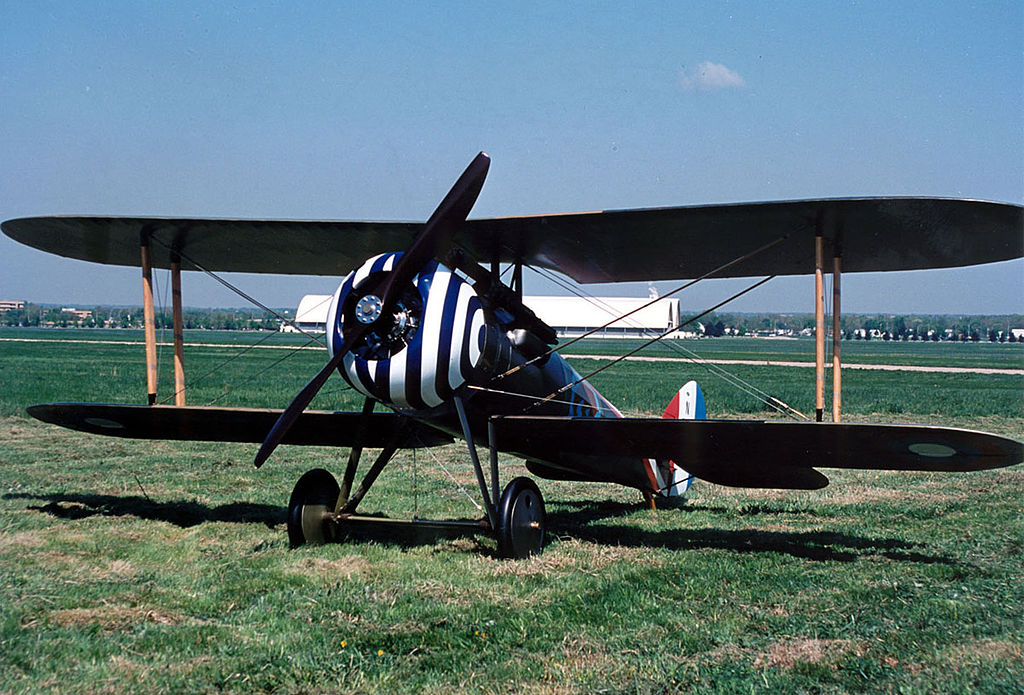

When America threw its weight behind the Allies in World War I, optimistic politicians and the writers of the day predicted that, soon, tens of thousands of top-tier planes would pour from American factories to the front lines, blackening the skies over the “Huns.” In reality, American aviation was too-far behind the combatants to catch up, and so American pilots took to the air with French castoffs that gave them diarrhea and nausea, obscured their vision, and would lose its wings during combat.

World War I plane designs relied on a small selection of engines, and most of them were lubricated with castor oil. As the war wore on and the oil was in short supply, Germany did turn to substitutes. But most engines, especially the rotary designs that gave a better power-to-weight ratio crucial for flight, actually burnt castor oil that escaped in the exhaust.
This oil was horrible for the pilot who, in most designs, was left breathing in his plane’s exhaust. Castor oil is used as a laxative, and it can also cause nausea. Pilots were, uh, not into that part of the mission. Worse, the droplets of castor oil would sprinkle on the aviator’s goggles, obscuring their vision with a film that masked the battlefield.
America’s top ace of the war, Capt. Eddie Rickenbacker, was famous around the aerodrome for often running around the corners of buildings after he landed so he could vomit from a combination of airsickness and castor oil exposure. He eventually got control of his stomach and could fly confidently, but it was a significant distraction for a long time.
But the castor oil problem was hard to avoid for aircraft designers. Making engines light and powerful enough to fly required all sorts of compromises, and the castor-lubricated rotary engines were one of the few designs that fit the bill.
But the bigger problem for early American pilots was that the U.S. had to buy French fighter planes, and France kept their best models for their own pilots. So America got planes like the Nieuport 28. The manufacturers had little time to test designs before they had to press them into production and service, and the 28 had one of the worst flaws imaginable.
In rigorous aerial flight, if U.S. pilots took a common but aggressive aerial maneuver, their top wings could break away.

Yup. They would lose their literal, physical wings.
It was a biplane design, meaning that it had two sets of wings, one above the other. That upper set of wings was attached with a thin spar. It would break if subjected to significant strain.
And World War I pilots attempting to escape a fight gone bad would often trade altitude for speed and distance. They did this by diving a short distance and then pulling up hard. The fighter plane would gain speed during the fall, and the aviator could hopefully get away before the pursuer could get a bead and fire.
But the weak upper wings of the Nieuport 28 couldn’t always take the sudden force of the pull up after the dive, and so an upper wing would snap during the pull up. So the pilot, already in a dire situation, would suddenly have less lift and it would be unequal across the wings, sending the pilot into a spinning fall.

(San Diego Air and Space Museum)
Despite these handicaps, American aviators proved themselves faster learners and braver than their allies had expected, leading to a grudging respect from the other pilots.
And, eventually, America would get access to the Spad XIII, an aircraft about as quick as the Nieuport 28 but without the weak wings. But, by that point, not everyone wanted to give up the Nieuport. That was partially because the Nieuport had great handling at high speed as long as the pilot knew how to nurse the engine and not exceed the tolerances for the wings.
The Spad XIII was a little more reliable and stable in normal flight, but some American pilots felt like they couldn’t maneuver as tightly in the new fighter plane, and they actually fought to keep the Nieuport 28s.
